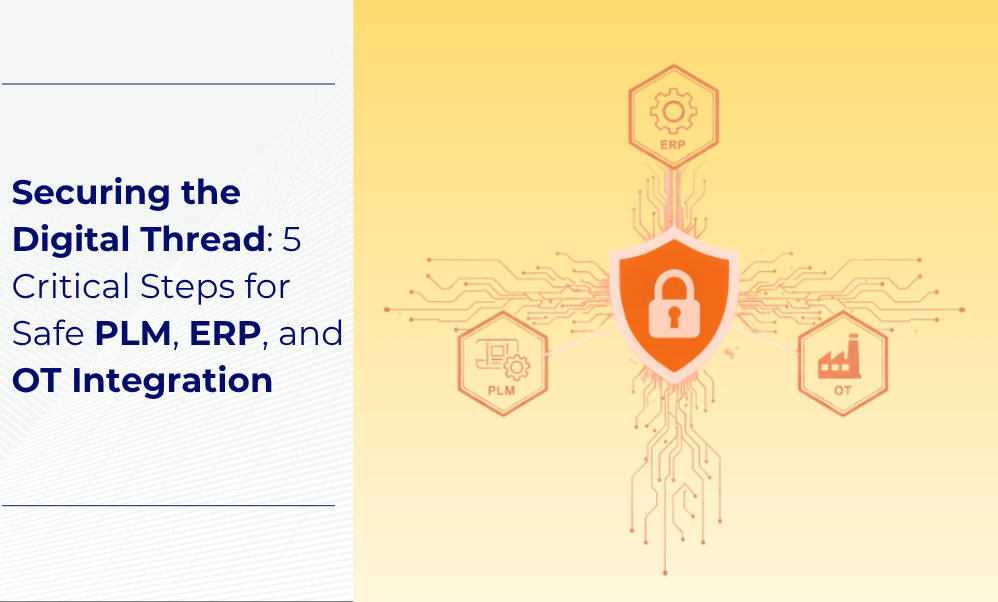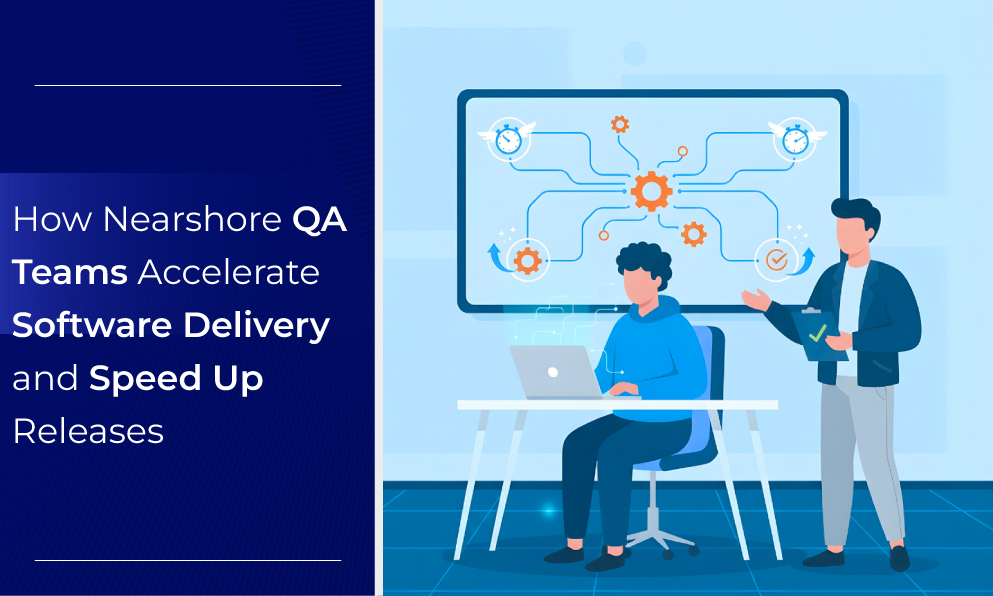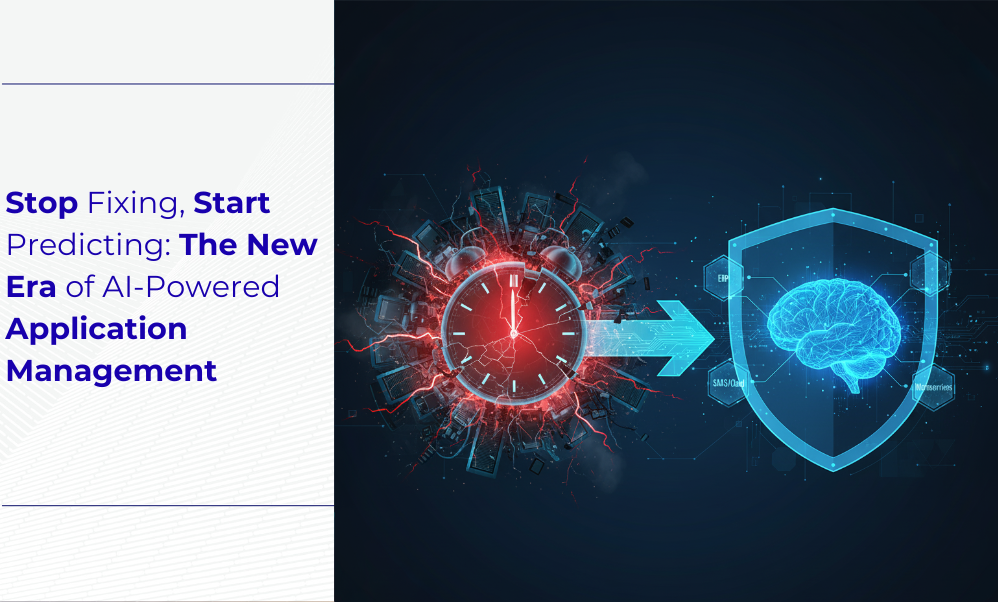Introduction
In today's hyper-competitive software landscape, the speed and quality of software delivery are no longer just IT metrics; they are core business drivers. For technology and delivery leaders, the pressure is relentless: release more features, faster, and with zero defects. However, many enterprises find themselves trapped in a cycle of delayed releases and inconsistent quality.
Traditional QA models are often the source of this friction. They struggle with fundamental challenges: crippling time zone gaps, limited test coverage, high operational costs, and persistent bottlenecks that bring development to a halt. This pain is especially acute for businesses implementing or managing complex, mission-critical systems like ERP, Odoo, Salesforce, or custom enterprise software. A single regression bug in these systems can halt operations, damage customer trust, and cost millions.
Nearshore QA teams, as part of a distributed global model, offer a powerful and strategic solution. By intelligently leveraging teams across multiple regions (for instance, a "follow-the-sun" model with teams in Japan, Europe, and Bangladesh), organizations can achieve 24/7 continuous testing. This strategic approach, refined by partners like BJIT, transforms QA from a bottleneck into a delivery accelerator, ensuring projects progress smoothly, defects are caught hours after they are written, and time-to-market is significantly reduced.
Challenges of Traditional QA Models
Despite best efforts and significant investment, many conventional QA approaches present significant, systemic limitations that prevent true agile delivery.
- Limited Coverage Across Time Zones: The 16-Hour Dead Zone Onshore teams, co-located with development, work in a single time zone. This creates a massive, silent delay every single day. A developer in Europe or the US commits a new feature at 5 PM. The onshore QA team has gone home. The build sits in the test environment, completely untouched, for the next 16 hours. Testing does not begin until 9 AM the next day, ensuring the project is always at least one full day behind.
- Slow Release Cycles: The Manual Regression Wall As enterprise applications like Odoo or Salesforce grow, so does their complexity. With every new feature, the "must-check" list of core functions (the regression suite) expands. In a traditional model, this testing is often manual. This "Manual Regression Wall" can take a team of testers days, or even weeks, to complete. The entire release is held hostage by this one slow, repetitive, and error-prone process, making a two-week "agile" sprint an impossibility.
- High Operational Costs: More Than Just Salaries The default solution—hiring more onshore testers—is often financially unviable. The challenge is not just the high salary. It is the loaded cost of recruitment, benefits, training, and, most importantly, the scarcity of specialized talent. It is not enough to just have a "tester"; an organization needs an ISTQB-certified automation engineer who also understands the intricacies of Product Data Management (PDM) or e-commerce APIs. This scarcity leads to long hiring cycles and compromises on talent. A mature partner organization, by contrast, is built to solve this. BJIT, for example, cultivates this talent at scale, maintaining a dedicated corps of 80+ QA engineers with deep domain experience, including 30+ dedicated automation specialists and over 50 ISTQB-certified professionals.
- Delayed Feedback Loops: The 48-Hour "Ping-Pong" To fight costs, many companies try a pure offshore model, often with a 10-12 hour time difference. This creates a new, even more damaging bottleneck: the "ping-pong" effect. A US-based developer finds a bug report from the offshore team in the morning. They have a simple question, but the entire QA team is asleep. They send an email and wait. The offshore team responds 12 hours later, but now the developer is asleep. A simple 5-minute clarification has just consumed 48 hours.
These challenges are not minor inconveniences; they are fundamental barriers to competing in a modern, fast-paced market.
How Nearshore QA Teams Address These Challenges
Nearshore QA is not just another word for outsourcing; it is a specific, strategic model designed to solve the collaboration, cost, and timezone gaps simultaneously. It provides the "Goldilocks" solution: the real-time collaboration of an onshore team with the efficiency of a global model.
- 24/7 QA Coverage: The "Follow-the-Sun" Model This is the most powerful benefit. By strategically distributing teams, organizations transform timezones from a liability into an asset. A proven model, perfected by BJIT's global delivery structure, combines teams in Japan, Europe, and Bangladesh:
- Japan (Onshore Dev): The development team works on new features and commits code by the end of their day.
- Europe (Nearshore QA): This team has several hours of overlap with the Japan team. They hold a "handoff" call, discuss priorities, and begin testing the new features immediately. They find critical, "show-stopper" bugs within hours of code commit.
- Bangladesh (Offshore QA): This BJIT team overlaps with the European team. They receive the now-stabilized build and execute the "heavy lifting": the full, overnight manual and automated regression suites.
- Japan (Next Morning): The development team arrives at 9 AM to a comprehensive, triaged bug report. The 48-hour "ping-pong" is gone. The feedback loop is now a continuous, 24-hour cycle.
- Cost Efficiency: Smarter Spending on Specialized Talent Nearshore QA delivers significant cost-efficiency without the compromises of a traditional offshore model. Organizations gain access to a global talent pool of highly qualified, ISTQB-certified engineers (like BJIT's team of 50+ certified professionals) at a fraction of the fully-loaded cost of hiring them onshore. The "total cost of quality" (TCoQ) plummets because organizations are spending less on recruitment, training, and, most importantly, fixing bugs that are found earlier in the cycle.
- Scalability: Elastic Resourcing for Project Peaks Enterprise development is not linear. An organization may need three QA engineers for steady-state maintenance but fifteen for a critical ERP data migration. In-house teams cannot scale this way; an organization is either overstaffed or under-resourced. A nearshore partner with a large pool of talent (like BJIT's 80+ QA engineers) provides "elastic resourcing." An organization can scale its team up from three to fifteen in a matter of weeks for a big project, and then scale back down just as easily, paying only for the expertise needed, when it is needed.
- Enhanced Collaboration: The Power of Overlap The key differentiator of "nearshore" is the high-bandwidth, real-time collaboration. With 4-7 hours of daily overlap, a nearshore QA team is not a separate, siloed entity. They become a true extension of the agile team. They can attend daily stand-ups, join sprint planning sessions, and, most critically, perform exploratory testing and bug-triage live with developers via screen-sharing. This high-touch collaboration is impossible with a 12-hour time gap and is the key to crushing the feedback loop.
Turn a QA Bottleneck into a Delivery Accelerator
Do not let a slow feedback loop hold back your enterprise. Schedule a QA consultation with BJIT's experts today to see how a strategic, distributed QA model can transform your pipeline. BJIT can help explore enterprise QA solutions and audit your software delivery process to find the real bottlenecks.
Key Benefits of Nearshore QA for Software Delivery
Implementing a nearshore-led model produces tangible, transformative results that resonate from the engineering floor to the executive boardroom.
1. Faster Release Cycles By eliminating the 16-hour "dead zone" and the 48-hour "ping-pong," continuous QA coverage allows an organization to shrink its entire development cycle. The State of DevOps Report (Google, 2023) consistently finds that "Elite" performers deploy hundreds of times more frequently than "Low" performers. This is not possible without a QA process that can keep pace. Continuous Testing directly enables Continuous Delivery, shortening time-to-market from quarters to weeks.
2. Improved Software Quality Nearshore QA enables a true "shift-left" approach. Because bugs are found within hours of being written, they are easier, faster, and dramatically cheaper to fix. The National Institute of Standards and Technology (NIST, 2002) found that a bug found in production can cost 30 times more to fix than one found during development. The 1-hour fix provided by a nearshore tester is exponentially cheaper than the 2-day fix of an offshore model or the 3-week fix of a bug found by a customer.
3. Seamless CI/CD Integration This model is built for modern DevOps. A mature nearshore partner like BJIT brings 10+ years of experience in test automation and CI/CD. The goal is not just to run tests but to build automation (using industry-standard frameworks like Selenium, Playwright, Appium, and Robot Framework) directly into the CI/CD pipeline (Jenkins, Azure DevOps, AWS).
This deep experience produces tangible results. For a leading global IoT provider, a small BJIT team of 3 QA engineers built and maintains a comprehensive automation suite of over 1,800 test cases using Selenium and TestNG. This level of automation provides end-to-end quality assurance from the hardware gateway to the cloud portal, enabling rapid, reliable feature deployment.
In another case, for a complex, multi-platform enterprise salon system (including CMS, Web, Android, and iOS applications), a BJIT team of 6 QA engineers successfully automated over 2,000+ test cases. This massive automation suite, built with Selenium, JUnit, and REST API testing, ensures a seamless, high-quality user experience across all platforms simultaneously.
4. Flexible Resource Allocation The "elastic" nature of a partnership with a firm like BJIT gives technology leaders incredible flexibility. Technology leaders can spin up a specialized "strike team" of automation engineers to tackle a regression backlog, then re-assign them to a new project. This agility allows organizations to align their QA spend precisely with their project's most critical needs, without the overhead of a large, fixed-cost in-house team.
5. Cost Optimization Nearshore teams provide enterprise-grade QA at a lower total cost. Organizations save on recruitment, training, and salaries while gaining access to a team with deep domain expertise (e.g., in PDM/PLM, IoT, or e-commerce) and industry certifications (like BJIT's 50+ ISTQB-certified testers). This combination of high-end talent and global delivery efficiency optimizes budgets for maximum impact.
Best Practices for Implementing Nearshore QA
A successful nearshore partnership is built on a foundation of clear processes and communication.
- Establish Clear Communication Channels: Define a single source of truth for all project artifacts (e.g., Jira, Confluence, Redmine). Use real-time collaboration tools (Slack, Teams) for instant feedback and reserve daily or bi-weekly sync-ups for strategic alignment between dev and QA leads.
- Adopt Test Automation Strategically: Do not try to automate everything. Start by automating an organization's "Top 20" most critical, stable business processes to build a reliable regression suite. A mature partner like BJIT will have a pre-defined "automation stack" ready to deploy, often including Java, Python, and Groovy for scripting, and frameworks like TestNG or Karate for API testing. Treat test code like production code: it must be version-controlled, code-reviewed, and maintainable.
- Monitor Metrics and KPIs: One cannot improve what one does not measure. Go beyond "bugs found." Track the metrics that matter:
- Defect Feedback Loop Time: The average time from "Code Commit" to "Bug Report."
- Defect Removal Efficiency (DRE): What percentage of bugs are found by QA vs. UAT vs. Production?
- Test Automation Coverage: The percentage of critical features protected by automation.
- Define Comprehensive Test Coverage: A world-class QA process goes beyond just functional testing. A mature partner will work with you to define a full test matrix that includes System Integration Testing (SIT), Performance Testing, Security Testing, and User Acceptance Testing (UAT) support. This ensures no aspect of the user experience, from speed to vulnerability, is left to chance.
- Maintain Documentation & Knowledge Transfer: A nearshore partner is an extension of the team. Ensure they have access to all documentation and conduct formal knowledge transfer (KT) sessions so they understand why a feature exists, not just what it does.
- Regular Checkpoints: Conduct periodic reviews and retrospectives. A strong partner will proactively suggest process improvements, new automation tools, or testing strategies to continuously improve quality and velocity.
Conclusion
For enterprises aiming to accelerate software delivery without compromising quality, the traditional QA model is no longer viable. It is a bottleneck, not an enabler.
Nearshore QA, as part of a strategic, distributed team, provides a proven solution. By offering 24/7 coverage, "elastic" and scalable resources, deep cost efficiency, and the collaborative power of continuous testing, this model transforms the quality process. It helps organizations stop finding bugs in production and start preventing them in development.
Partners like BJIT, with 20+ years of experience in manual testing and over a decade in test automation, have refined this model into a predictable, high-velocity engine for enterprise growth.
In today's market, organizations cannot afford the 48-hour "ping-pong" or the two-week "Manual Regression Wall." It is time to move from a QA bottleneck to a QA accelerator and achieve a true competitive edge.
Ready to Accelerate Your Release Cycle?
A QA process should not be a mystery. Schedule a QA consultation today and let our experts audit your software delivery process. Our experts will help explore enterprise QA solutions to accelerate your releases.
References
Google. (2023). 2023 State of DevOps Report: Culture is everything. Google Cloud. https://cloud.google.com/devops/state-of-devops
National Institute of Standards and Technology. (2002). The economic impacts of inadequate infrastructure for software testing (Publication No. 02-3). U.S. Department of Commerce. https://www.nist.gov/system/files/documents/director/planning/report02-3.pdf









